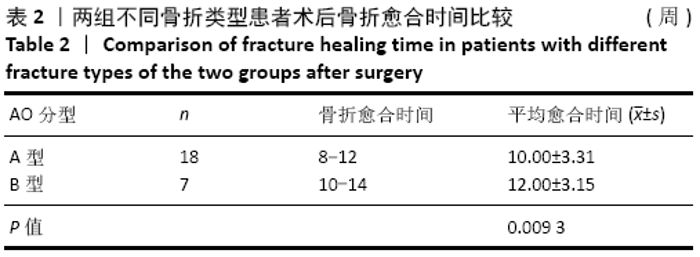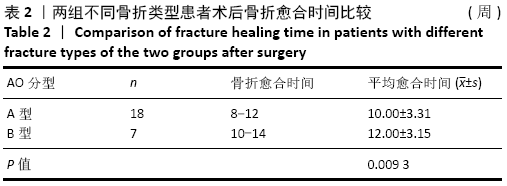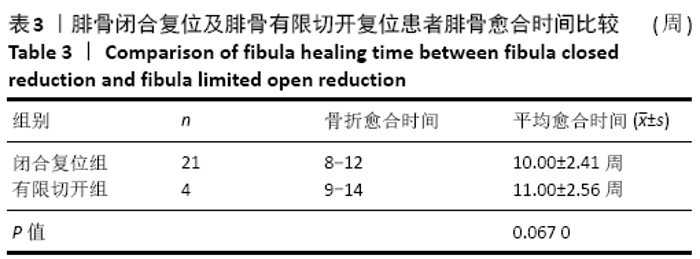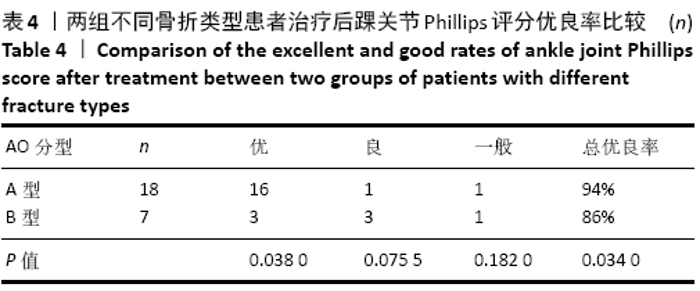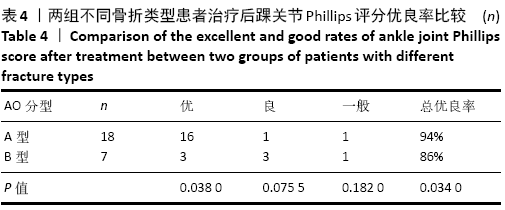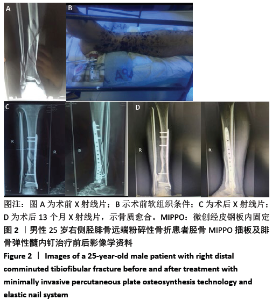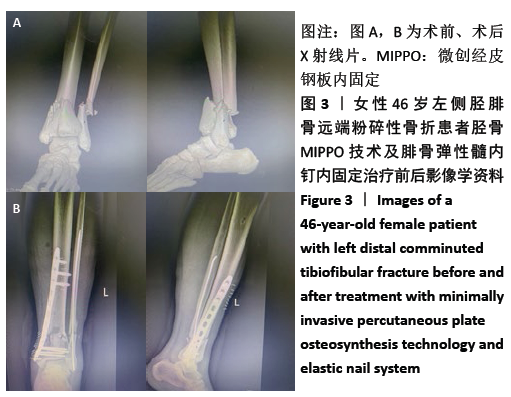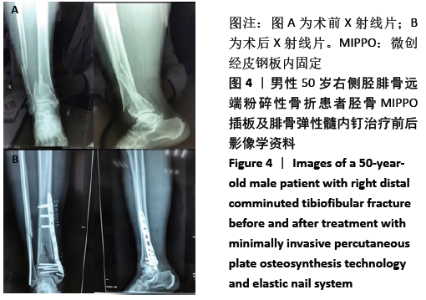[1] 郭再冉,王新卫.腓骨骨折、缺损的研究进展[J].中医临床研究, 2018, 7(26):144-146.
[2] 白小江,常文凯,郭振业.胫腓骨骨折临床研究[J].世界最新医学信息文摘,2015,15(32):7-8.
[3] 张潜龙,李子军.胫骨远端锁定接骨板与胫骨远端髓内钉在胫腓骨远端骨折治疗中的应用效果[J]. 临床医学研究与实践,2018,3(32):82-83.
[4] JOHNER R, WRUHS O. Classification of tibital shaft fractures and corre lation with results afler rigid internal fixation. Clin Orthop. 1983;178:7-25.
[5] 魏世隽,蔡贤华.后踝骨折的基础研究与临床研究进展[J]. 中国矫形外科杂志,2017,21(12):1195-1197.
[6] 单晓冬,谢冠华,桑双进,等.胫前锁定加压钢板治疗胫腓骨远端骨折的临床研究[J].河北医学,2015,21(5):705-708
[7] 刘永祥.老年胫腓骨远端骨折采用胫前减张切口联合锁定加压钢板治疗的临床疗效及安全性分析[J].中国卫生标准管理,2015,6(27): 34-35.
[8] 唐岩,邢宏,田野,等.锁定钢板内固定治疗胫骨远端骨折[J]. 中国骨与关节损伤杂志,2011,26(2):181-182.
[9] 郝博川,谢克波,熊琳宵,等.手法复位经皮微创锁定钢板固定治疗胫腓骨远端骨折60例[J].中国骨伤,2014,27(6):491-495.
[10] 刘强.髓内钉与锁定接骨板治疗胫骨干骨折的比较研究[J]. 医学信息, 2015,28(38):206.
[11] 李建刚,王磊,董喆,等.髓内钉与钢板内固定治疗胫骨远端关节外骨折的Meta分析[J]. 中国组织工程研究,2013,11(26)8361-8367.
[12] 杨轶.髓内钉与锁定加压胫骨远端接骨板治疗胫骨骨折的对比研究[J].中国医学工程,2014,3(3):41.
[13] 李洪敬,唐开,汤欣,等. 微创经皮锁定加压钢板接骨术治疗胫骨远端骨折[J]. 中国医师进修杂志,2007,30(6):32-33.
[14] 杨坚,穆亮,王维山.胫前减张切口结合锁定加压钢板治疗老年胫腓骨远端骨折的临床疗效[J].中国老年学杂志,2017,35(5):1298- 1299.
[15] GAREY TP, CALPIN RD. Flexible interamedullary nail fixation of pediatricfemoral fractures.Clin Orthop Relat Res.1996;332(332):110-118.
[16] FURAN D, POGORELIC Z, BIOCIC M, et al. Elastic sable intramedullary nailing for pediatric long bone fracture;experience with 175 fracture. Scand Surg. 2011;100(3);208-215.
[17] EGOL KA, WEISZ R, HIEBERT R, et al. Does fibular plating improve alignment after intramedullary nailing of distal metaphyseal tibia fractures. J Orthop Tramma. 2006;20(2):94-103.
[18] 陈奕,吕建元,陈吉,等.钦制弹性髓内钉微创治疗锁骨中段骨折的生物力学研究[J]. 中国矫形外科杂志, 2011,19(20):1723-1725.
[19] 谭家昌,杨有猛,徐鸿育,等.弹性髓内钉与钢板内固定治疗儿童股骨干骨折的疗效对比[J].中国骨与关节损伤杂志,2009,24(1):78-79.
[20] 任军帅,张英明,谭江,等.生物医用钛合金材料发展现状及趋势[J].材料导报,2017,11(30):384-387.
[21] 李庭,孙志坚,柴益民,等.ERAS理念下踝关节骨折诊疗方案优化的专家共识[J].中华骨与关节外科杂志,2019,12(1):3-12.
|


